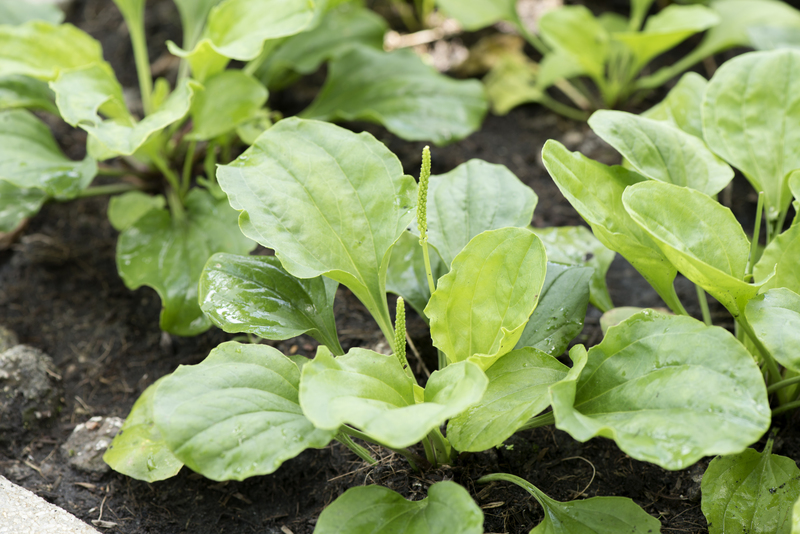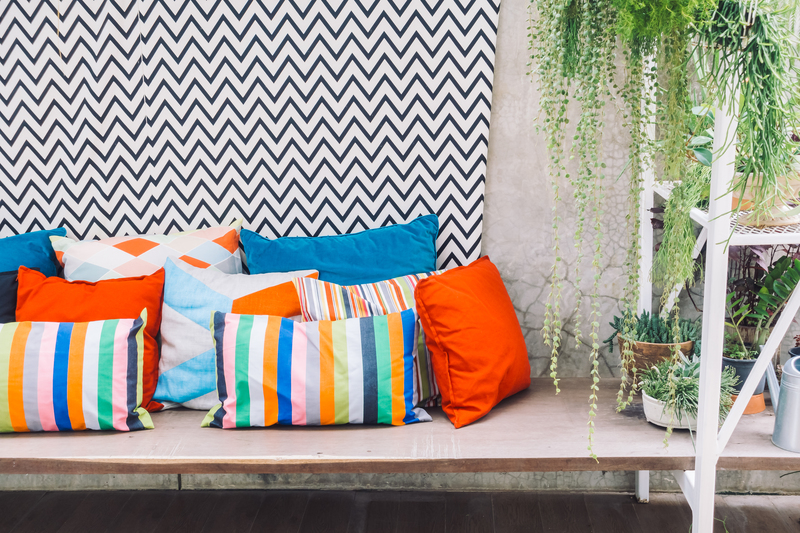Garden Seating Design: A Comprehensive Step-by-Step Guide
Posted on 07/09/2025
Garden Seating Design: A Comprehensive Step-by-Step Guide
Is your outdoor space missing that special touch? Garden seating design goes far beyond simply placing a bench or chair among your flowers. Successful garden seating not only provides comfort and function, but also serves as an eye-catching focal point, blending beauty and practicality. In this comprehensive step-by-step guide to garden seating design, we'll walk you through choosing the perfect seating, integrating it with your landscape, and ensuring your garden becomes your favorite outdoor retreat.
Why Garden Seating Design Matters
The heart of every beautiful garden is a welcoming place to pause, unwind, and soak up the surroundings. Well-designed garden seating can:
- Enhance visual appeal by creating focal points and depth.
- Increase functionality for entertaining, relaxing, or dining.
- Encourage interaction with nature by providing places to sit and observe.
- Add value to your property by elevating outdoor living spaces.
By paying attention to how your seating integrates with both your lifestyle and the garden's layout, you create a truly welcoming outdoor environment.

Step 1: Assessing Your Garden Space
Before diving into designs, you need a clear understanding of your outdoor area's parameters. Here's how to start:
Measure and Map Out the Area
- Sketch your garden's layout, noting existing trees, paths, views, and sun patterns.
- Identify potential seating spots--by water features, under shade, with a scenic view, or in cozy corners.
- Measure the available space, considering traffic flow and existing plantings.
Analyze the Environment
- Is the site sunny, shady, or exposed to wind?
- Does it offer privacy or require screening?
- How is the ground surface--flat, sloped, or uneven?
By answering these questions, you'll pinpoint the ideal locations and limitations for your garden seating arrangement.
Step 2: Choosing the Right Garden Seating Style
Your garden seating design should reflect both your personal taste and your garden's overall aesthetic. Here are popular seating options to consider:
Benches and Settees
- Classic wooden or stone benches offer timeless elegance and durability.
- Arbor benches create romantic focal points, especially when draped with climbing plants.
- Backless designs easily blend into flower beds or lawns.
Chairs and Loungers
- Adirondack chairs provide a laid-back, rustic vibe.
- Metal bistro chairs suit smaller patios and cottage gardens.
- Outdoor loungers are perfect for poolside relaxation or sunbathing spots.
Built-in Seating
- Stone, brick, or timber built-in benches can define garden rooms and double as retaining walls.
- Raised beds with wide ledges can serve dual functions--planting space and seating!
Unique and Creative Garden Seating Ideas
- Hanging swings or hammocks for a touch of whimsy and relaxation.
- Repurposed tree stumps or logs for a natural, eco-friendly look.
- Movable poufs or low tables to accommodate flexible gatherings.
Choosing the right garden seating style ensures your outdoor area suits all occasions--from solitary reading sessions to lively garden parties.
Step 3: Selecting Materials for Outdoor Seating
The material you choose plays a pivotal role in determining your garden seat's longevity, appearance, and maintenance needs:
- Wood: Warm and organic, but requires weatherproofing. Cedar, teak, and eucalyptus are popular choices.
- Metal: Durable and often ornate. Look for powder-coated aluminum or wrought iron. May need rust protection.
- Stone & Concrete: Permanent, timeless, and nearly maintenance-free, though they can be less comfortable without cushions.
- Rattan & Wicker: Lightweight and stylish, suitable for covered patios or sunrooms.
- Recycled materials: Upcycled pallets, composite plastics, or reclaimed wood offer eco-friendly options.
Tip: Match material colors and finishes to your home's exterior or other garden elements for a cohesive look. When in doubt, opt for neutral tones that complement seasonal flower color changes.
Step 4: Designing for Comfort and Accessibility
Even the prettiest garden seating arrangement will go unused if it isn't comfortable. Integrate ergonomics and practical considerations into your design:
- Proper seat height: Standard bench height is 16-18 inches; lounger heights may be lower.
- Back support: Consider sloping backs at 15-20 degrees for relaxation.
- Armrests: Add comfort for prolonged sitting and make getting up easier.
- Cushions and pillows: Choose weather-resistant fabrics and store them indoors in bad weather.
- Accessibility: Wide, level paths (min. 36 inches) and step-free zones ensure everyone can enjoy your garden seating.
A thoughtful blend of form and function makes your garden seating solution inviting for years to come.
Step 5: Integrating Seating with Garden Design
Great gardens and outdoor seating are planned together, not as separate zones. Here's how to ensure visual harmony:
Frame Views and Focal Points
- Place seating where it captures the best vistas--ponds, sunsets, flower beds, or sculpture.
- Use plantings and hedges to frame seating areas and create an intimate feeling.
Blend with Planting Schemes
- Position seats within fragrant borders or near sensory plants for an immersive experience.
- Choose colors and textures that echo your plant palette; e.g., rustic wood with wildflowers, sleek metal with modern grasses.
Use Pathways for Access
- Link your garden seating arrangement to main house paths.
- Use natural materials--gravel, stepping stones, or brick--to define routes to each sitting spot.
Create Microclimates and Shelter
- Position seats under pergolas, arbors, or trees for cooling shade.
- Add screens, trellises, or tall plants to block wind and increase privacy.
Integrating each seating area within your garden's structure transforms them into seamless, delightful destinations.
Step 6: Lighting and Accessories
Quality garden seating design includes more than just benches or chairs. Strategic lighting and thoughtful accessories extend usability and boost ambience:
- Solar stake lights or string lights for after-dark gatherings.
- Portable lanterns or battery-operated candles for soft illumination.
- Outdoor rugs to define sitting areas and add color.
- Side tables for drinks, books, or gardening tools.
- Planters and flower pots to soften hard surfaces and add vibrant color.
With the right finishing touches, your garden seating area becomes the perfect setting for both day and night enjoyment.
Step 7: Weatherproofing & Maintenance
To maximize the lifespan and continued enjoyment of your outdoor seating, plan for protection and easy upkeep:
- Choose weatherproof materials and apply regular sealants or protective finishes as needed.
- Store cushions and fabrics indoors during rain or winter.
- Trim back overhanging branches to prevent sap and leaf debris.
- Clean seating surfaces regularly with appropriate cleaners.
- Inspect and repair hardware, joints, and finishes annually.
A little upkeep ensures your garden seating remains inviting and comfortable, season after season.
Step 8: Inspiration--Popular Garden Seating Design Trends
Ready to get creative? Here are some top garden seating design trends and variations to inspire your plans:
Naturalistic & Eco-Friendly Styles
- Seating made from reclaimed timber or live-edge slabs.
- Earth berm seats blending into grassy slopes.
- Sustainable materials such as bamboo or recycled plastics.
Modern and Minimalist Seating
- Streamlined concrete or metal benches for a contemporary look.
- Monochrome palettes echoing modern house designs.
Colorful and Creative Touches
- Brightly painted benches as artful garden statements.
- Mix-and-match cushions for a boho vibe.
Multifunctional Seating
- Storage benches to keep cushions and tools handy.
- Convertible designs for both lying and sitting.
Experiment with these ideas to add your own personal signature to your outdoor oasis.
Step 9: DIY Garden Seating Projects
Want to build your own? Here's a quick, step-by-step outline for a simple DIY garden bench:
- Plan & Measure: Sketch your bench and gather measurements based on your space and seating needs.
- Choose Materials: Opt for weather-resistant wood like cedar or pine, or reclaimed pallet wood for a rustic look.
- Cut the Pieces: Use a saw to cut seat planks, legs, and supports to size.
- Assemble the Frame: Screw or bolt the seat and leg components together, ensuring a stable structure.
- Finish & Seal: Sand rough edges and apply an outdoor sealant, stain, or paint.
- Install: Place your bench in its destined spot and test for stability.
- Accessorize: Add cushions, throw pillows, and position potted plants nearby for a welcoming touch.
There are many variations--try log seating, stone benches, or repurposed objects for unique, budget-friendly options.

Common Garden Seating Design Mistakes to Avoid
- Overcrowding: Avoid blocking garden paths or cramming in too many seats.
- Ignoring orientation: Consider sun angles and wind when positioning seats.
- Choosing the wrong size: Make sure seats fit both the space and intended users.
- Neglecting drainage: Ensure seating rests on well-drained surfaces to prevent rot or shifting.
- Forgetting maintenance: Untreated or poorly protected materials won't last long outdoors.
With careful planning, you can sidestep these pitfalls and create a seating area that will be a pleasure for years.
Conclusion: Design Your Ideal Garden Seating Today
Effective garden seating design draws together form, function, and aesthetics, turning any outdoor area into an inviting sanctuary. By assessing your space, selecting the right materials and styles, and considering comfort, integration, and maintenance, you'll create a garden retreat that's perfect for relaxation and entertaining.
From classic benches to creative seating arrangements for gardens, your choices are only limited by imagination. Explore different ideas, embrace trends that fit your style, and above all, let your seating invite you outdoors to enjoy the beauty of nature right at your doorstep.
Begin your garden transformation today--because every beautiful garden deserves a well-designed seating area!

